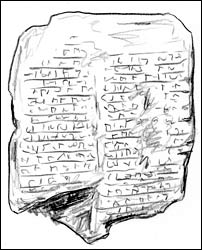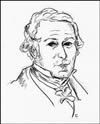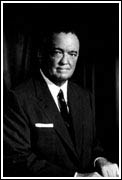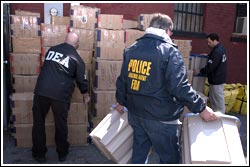
CRIMJ210:
Lesson 2: Police History and the Organization of Public and Private Security in the United States
Introduction
Policing in America traces its roots to England, beginning in the ninth century with the mutual pledge system and progressing to the thief-takers of the seventeenth century. Sir Robert Peel is credited with organizing the first police department in London, England. American policing began during the colonial period, using the English model with constables by day and watchmen at night. Boston was first to create an organized police department in 1838 followed by New York, Philadelphia, Chicago, New Orleans, Cincinnati, Baltimore, and Newark. Policing on the American frontier was scarce.
Police professionalization began in the early part of the twentieth century and continued through the turbulent 1960s and 1970s. This struggle continues as local, state, and federal law enforcement agencies attempt to restructure themselves to manage the affairs of the new millennium. Clearly, the twenty-first century promises to be another turbulent and challenging time for police.
Policing and law enforcement in the United States is based from a viewpoint of local control, which accounts for the large number of police and law enforcement agencies, including a myriad of local, state, and federal. (A general outline will be presented.) Also part of U.S. policing is the large private security industry, whose role is valuable in supplementing the limitations of public law enforcement.
Objectives
After completing this lesson, you should be able to:
-
describe the history of policing and how the U.S. model developed from the English model;
-
outline the progression from early American policing to present-day policing;
-
describe the many local, state, and federal policing and law enforcement agencies in the United States;
-
list the breadth of private security in the U.S. and its various functions.
Road Map
To Do
Complete the following lesson assignments:
- Discussion Forum Activities
- Successfully pass the Plagiarism test.
- Submit a copy of your certificate for completing the Plagiarism test to the Drop box
- Complete the APA Tutorial
- Submit a copy of the Poll completion page at the end of the tutorial to the Drop box
- Registering with Kryterion Online Testing Services
- Install Hue HD webcam
- Download the required software (Webassessor Sentinel Security Shield software™)
- Register with Kryterion
- Schedule and complete your Practice Test - required (instruction)
- Schedule your Exam #1 (instruction)
Early Policing
One of early history's codifications of law is The Code of Hammurabi, named for the Babylonian ruler said to have ruled in the eighteenth century B.C.E. The Code stands as empirical evidence of a set of written laws and the penalties for violating those laws. Although there is no direct evidence of a police or law enforcement agency during Hammurabi's rule, logic suggests such existed.
Not until the third century B.C.E. did Roman magistrates appoint individuals to serve as the law enforcement arm in their jurisdiction. This progressed into the Praetorian Guard, and later the Vigiles of Rome, who served as the first firemen and grew into a policing organization. From the Vigiles of Rome come the terms vigilante and vigilance.
Sir Robert Peel
Sir Robert Peel has long been recognized as the father of modern policing. Read Peel's Nine Principles carefully and take notice of their ordering.

Discussion Activity
Please post your answers to the Lesson 02 Peel's Nine Principles discussion forum. Remember to also respond to at least three of your classmates' postings, choosing ones that represent different viewpoints.
The Changing Focus of the Police
Early policing in America was based on the watchman style. Even into the nineteenth century, policing was not very organized. That changed in 1838 when Boston created the first organized police department. New York City followed in 1845, and Philadelphia in 1854. Early policing in the United States was political, and the buying and selling of police positions was common. And yet in some jurisdictions police officers were also street sweepers and some opened their empty jail cells to the homeless for shelter and food. Still, training was non-existent and more often than not, the great arbiter of disputes was the end of a police officer's nightstick.
Policing into the Twentieth Century
Policing at the turn of the twentieth century was rife with corruption - a problem that continues to plague current police administrators. Reforms in policing were attempted during the progressive period of American government (1900-1914) with no effect. The Boston Police Strike of 1919 was a first of its kind. It ended when rioting and looting broke out, turning the public against the striking officers and ending their strike. Not until 1969 did the next unofficial police strike occur in New Orleans, where police officers succumbed to an outbreak of the "Blue Flu." New Orleans firefighters joined them in an outbreak of the "Red Flu." Yet these job actions ended without benefit to the officers or firemen. Ten years later, Mardi Gras was cancelled when NOPD officers participated in the first official police strike in 60 years, ending in frustration and failure for NOPD officers as well. (Note: the course author was an NOPD officer at that time and participated in both the "Blue Flu" and the strike.)
Policing in the Turbulent 1960s and 1970s
The 1960s and 1970s were turbulent decades in the United States: the Civil Rights movement was in full swing, and the U.S. Supreme Court had handed down major decisions such as Mapp v. Ohio (1961), Escobedo v. Illinois (1964), and Miranda v. Arizona (1966). In just one decade, three national leaders were assassinated: President John F. Kennedy (1963), Robert Kennedy (1968) and Dr. Martin Luther King (1968). This, too, was the era of national anti-Vietnam war demonstrations, including those of college campuses, the most notable being the May 4, 1970, tragedy at Kent Sate University, where members of the Ohio National Guard killed four students and wounded another nine.
This was a particularly difficult time for the police in that they were forced to deal with civil disobedience and a general lack of respect from the younger, often referred to as the "hippie", generation. Officers were neither educated nor trained for this. Often, police met civil disobedience and disrespect with force rather than attempting dialog or understanding. This did nothing to bring the two sides together, and only served to polarize the different parties. Also emerging during this time were both black and white radical organizations such as Students for a Democratic Society (SDS), the Black Panther Party, the Symbionese Liberation Army (SLA), and the ever-present Ku Klux Klan just to name a few. Police believed they were besieged from all sides as pressure was exerted from these various organizations and police administrators as well.
All of this pressure generated an "us v. them" mentality among police, and fostered what came to be known as the "Fort Apache Syndrome." This moniker has its origin in the former 41st Precinct of the New York Police Department. Located in South Bronx, the rank and file of this precinct adopted this title for their station because they considered themselves surrounded by criminals. The police isolated themselves from the public eliminating lines of communication with the public thereby creating even greater distrust and often hate. Although some efforts have been made at community policing, most less than sincere and half-hearted, police are more isolated from the public than ever before. Evidence of this can be easily experienced by attempting to gain access to just about any police station. Citizens may enter only the outer portion of a police station after gaining entry through a locked door. Then the citizen must interact with the police through bullet-proof glass. This stands in stark contrast to banks, fast-food outlets, and many other stores that transact business with citizens. These concerns are much more likely to experience violent crime, than would any police station. Why this exists and how it came about will be discussed later in this course.
Policing into the Twenty-first Century
The millennium had barely begun when international terrorists commandeered passenger airliners and turned them into flying bombs. September 11, 2001, is a date that will be etched for all time in memories of Americans. Since then, we have witnessed increased security and scrutiny by all levels of government. But are we any more secure than we were pre-September 11, 2001? The Patriot Act of 2001 was enacted and just recently the USA Patriot Act Improvement and Reauthorization Act of 2006 was enacted. In October 2005, in the name of securing life and liberty, we witnessed warrantless searches of persons in New York City subways and of vehicles and persons at the scene of a bomb threat in Baltimore, Maryland. In both situations, no bombs or explosives were found nor were any persons suspected of terrorism arrested. Yet everyone submitted voluntarily to a search.
Organizing Public and Private Security in the United States
Local v. National Control
Many know the adage "all politics is local." Policing in the United States is viewed similarly, accounting for why this country has more than 18,000 full-time police and law enforcement agencies. The vast majority of these are local police departments with fewer than 50 sworn personnel. The majority of the uniformed officers are engaged in patrol work, while fewer than 20 percent are assigned as full-time investigators.
The most recognized of federal law enforcement agencies are the U. S. Department of Justice; Department of Treasury; Department of Homeland Security; Department of the Interior; Federal Bureau of Investigation, Drug Enforcement Administration; U.S. Marshals Service; Internal Revenue Service; Bureau of Alcohol, Tobacco, Firearms, and Explosives; National Park Service; U.S. Capitol Police; U.S. Postal Inspectors; and the U.S. Department of Diplomatic Security.
Private Security
In the past 25 years, the private security industry has grown tremendously. In 2003, persons in the contract and proprietary security industry held 1.1 million jobs. This field spans from security guards to armored car services to security consultants and engineers. Private investigation agencies such as The Pinkertons and Wackenhut are also major employers in the field.
Only recently has there been a demonstration as to how far privitatization has progressed into policing and law enforcement. Edward Snowden leaked details of the National Security Administration’s (NSA) surveillance program. Contrary to the beliefs of many, Snowden was not an employee of the U.S. Government but worked for Booz Allen Hamilton, a private contractor. Both the Clinton and Bush administrations touted how they had reduced the size of governement workers. However, they failed to inform the public that these same jobs had been contracted out to priviate industry at an increased cost.
Lesson Activities
Plagiarism Test
Prior to beginning the writing assignments, it is mandatory that students proceed to the following web site to take and successfully pass the Indiana University Bloomington School of Education Plagiarism Test:
Students MUST pass this test no later than the end of Lesson 2. Once the test is passed, students will receive a certificate indicating successful completion. Please copy that certificate and place it in the Plagiarism Test drop box. The test may be taken as many times as necessary but it must be passed.
The purpose of this assignment is to inform students who may be unsure of what constitutes plagiarism. Plagiarism will be dealt with harshly in this course, and it is important that you students understand what it is and how to avoid it. This is an excellent site that explains what plagiarism is and provides examples. Note: No writing assignments will be scored until the Plagiarism Test has been completed and certification placed in the Drop Box.
APA Tutorial
Prior to beginning the writing assignments, it is mandatory that students proceed to the following web site take and successfully complete the Harvard APA Tutorial.
You MUST complete the tutorial no later than the end of Lesson 02. When you complete Module 4 of the tutorial, take a screen shot of this page and submit it to the "APA Tutorial" Drop Box as an attachment. This will be used as proof that students completed the tutorial.
The purpose of this assignment is to inform students on proper use of APA style. Note: No writing assignments will be scored until the APA Tutorial has been completed andthe poll submission is placed in the Drop Box.
Discussion Forum for Lesson 2
Participate in the Lesson 2 Discussion Forum. Remember to also respond to at least three of your classmates' postings, choosing ones that represent different viewpoints.
Further Readings (Optional)
- More information on Sir Robert Peel
- New York City Police Department
- New York City Police Museum
- The Federal Bureau of Investigation (FBI)
- The U.S. Secret Service
- The Department of Homeland Security
- The Bureau of Alcohol, Tobacco, Firearms, and Explosives
- The Drug Enforcement Administration (DEA)
- Interpol
- Jobs in Private Security, Pinkerton Security and Investigation Services
- Wackenhut Corporation
- Equifax Employment Services
- Kroll's Associates
- The American Society for Industrial Security (ASIS)
- New Orleans Police Department
- London Metropolitan Police History